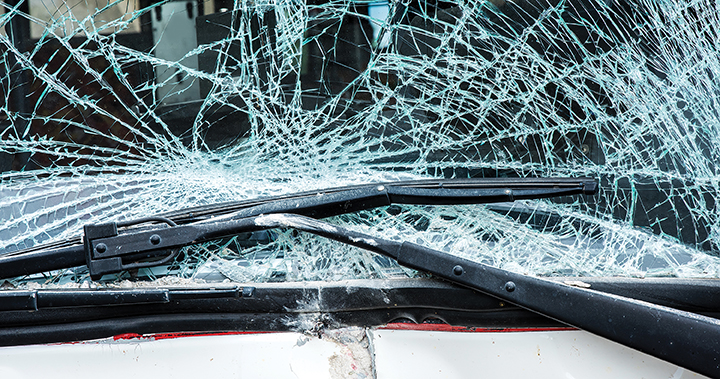
By Ed Harmon
Owners should begin assessing whether to take on a collision repair by asking a few simple questions up front like: Do we have the necessary resources or expertise to purchase the right replacement parts the first time? Have we performed major body repairs before? What is the estimated time for repairs and how that will impact our fleet downtime? Revenue loss should also be taken into the equation.
For operators who attempt their own repairs, the risk of ordering the wrong parts can be a costly mistake in terms of money and extended downtime. Sometimes these parts are special-order or “Make” components that cannot be returned. Common mistakes happen when straightening, welding, or replacing a frame component incorrectly by not bringing alignment back to original specifications to ensure subsequent parts fit correctly. One must always ensure that electronics are properly isolated prior to performing any welding operation on a vehicle to prevent damage. Tap plates must be installed in the correct places before installation of a rear or front cap or another body panels that requires them. Rework will ensue if they are not fitted prior to installation. Breaking windshields upon installation happens due to incorrect alignment of front frame members and cap.
Sometimes a second replacement part may need to be ordered which adds additional unpredictable down time (given the current supply-chain issues) and even more expense.
The added cost of unsatisfactory repairs and the multiple and incorrect parts is the repairing shop’s responsibility which the operator would have to absorb.
Most operators should consider outsourcing when a repair requires structural frame component replacement. If the repair does require replacing framework, welding can destroy sensitive on-board electronics. The operator should take the best route and select a repair facility with the infrastructure and parts inventory to perform the repairs completely, quickly, and correctly. A full gamut of experience and training is required in many areas including collision specialists, body and paint technicians, along with enough business to support investment in the required metal fabrication and alignment equipment, paint booths and pulling equipment. Outsourcing to a reputable and qualified facility is most important. My advice is to check references then go with a qualified shop with experience!
Key Factors in a Collision Repair
Cost is the by far the primary factor. The operator should consider the extent of the damage to the vehicle and how long the vehicle will be out of service. There are opportunity costs such as lost revenue and missed trips, fixed costs, payments, depreciation, insurance etc… that continue even when a bus is down waiting on parts and repairs to commence then the repairs to be completed. The cost of taking the repair route on a vehicle which is on the verge of being “totaled” can exceed the value of a replacement vehicle. Do the math and evaluate your options prior to moving forward a major repair.
If the collision damage can be readily repaired in a short period of time and the operator can minimize and absorb the opportunity and fixed costs while bring the vehicle back into service, that is the route to take.
Working on electric and hybrid requires specific training in working with and around high voltage equipment. Whether developing, verifying, or validating a vehicle electrification system, performing service, repairs or diagnostics and testing, SAE High Voltage (HV)Training is essential to protecting EV assets and the people working on them. Regular inspections of PPE (personal protective equipment) and recertifications should be part of a high voltage service program. Technicians who have completed the SAE HV certification program follow a checklist of protocols designed to isolate and deactivate potentially dangerous components prior to service performance and follow the same protocols to reactivate the system. In reality, new training and retraining on EV platforms should be an extension of existing service knowledge and capability. Essentially outside of the electric motor and energy storage systems, along with traditionally Internal Combustion Engine (ICE) driven auxiliary components, most other existing components largely remain the same. Along with a commitment to ongoing SAE HV training and safety oversight, HV safety should be a top priority in shops servicing these vehicles. Whether completing a simple or more complex repair, having HV certified technicians in conjunction with proper PPE and tools necessary to service electrical systems, as well as adhering to the rules and processes ensures that safety is priority one when working on any CNG, Hybrid or EV system.
For many operators that are coming back into service, market fluctuations, availability and financial constraints could prevent a new coach purchase. If they have the capital to invest however, then new is usually the way to go. However, we are seeing variable market rebounds depending on the region. In some instances, the demand for ridership is outpacing the ability to secure and invest in a new bus. In that scenario, looking at a rehab can help owners keep up with customer expectations via an affordable investment that can bring a coach back to like new condition. A well-executed midlife overhaul can result in a reliable, safe, clean coach with great curb appeal and upgrades for all the creature comforts that today’s riders expect. And the rehab can be accomplished in varying degrees, based on how the owner plans to use the asset in service. At the top end, owners might consider creating a list of items to bring the coach up to a new, more modern spec with many “wow” factor upgrades, such as a new front cap, enhanced stepwell area and driver’s area, new seat covers, etc. – all culminating in that “new coach feel and smell.” The finished product can really make a great first impression from the curb side to the interior cabin and is a truly affordable alternative that can maximize financial return on an older model coach.
Ed Harmon serves as national director of operations, Southeast Region for ABC Companies. Please visit www.abc-companies.com for more information.
